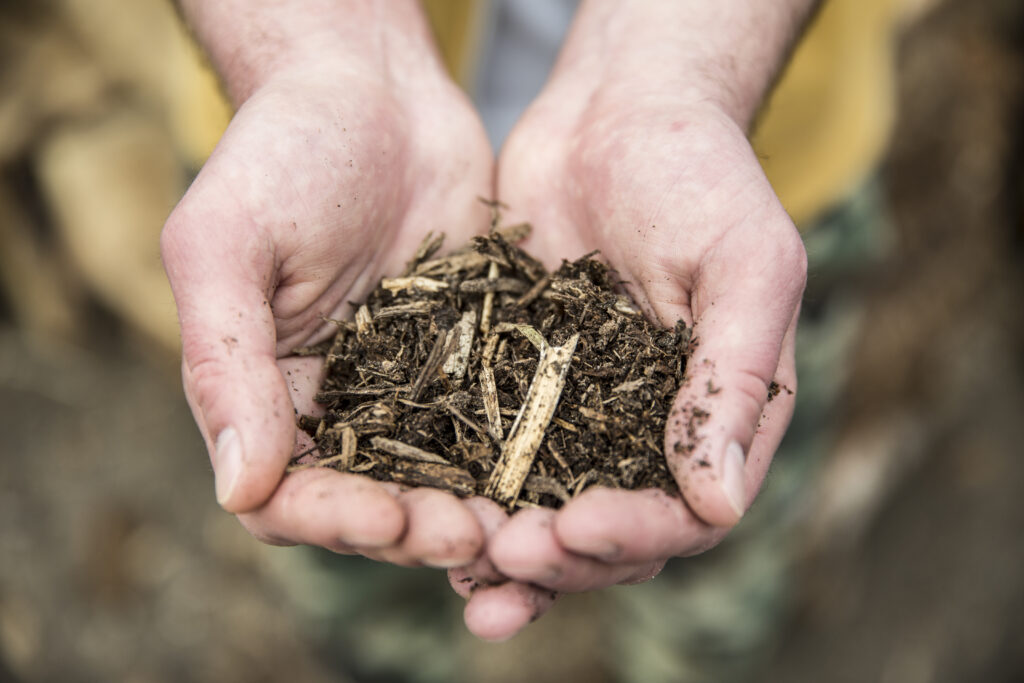
Pat.236394 Zastosowanie odpadowego kwaśnego fosforanu potasu KH2PO4 do wytwarzania granulowanego nawozu wieloskładnikowego
Twórcy: Andrzej Vogt, Stanisław Strzelecki, Sławomir Szafert, Mirosław Rakow, Stanisław Klesyk
Rozdzielając surowy odpad glicerynowy otrzymuje się:
- stały kwaśny fosforan potasu KH2PO4 zwilżony nieco glicerolem technicznym,
- frakcję zawierającą odpadowy ester etylowy tzw. frakcję energetyczną z rozpuszczonymi w nim w ilości ok. 55-60% wolnymi kwasami tłuszczowymi, będącą doskonałym paliwem dieslowskim, który wykorzystać można do kogeneracyjnego wytwarzania energii elektrycznej i cieplnej oraz
- surową bio-glicerynę techniczną (95-98%).
Omawiany tu wynalazek dotyczy rolniczego wykorzystania cennego dla roślin składnika typu KP, jakim jest kwaśny fosforan potasu KH2PO4, roztworem którego nasyca się rozdrobniony do wielkości ziarna 2 mm węglan wapnia, magnezu lub dolomit. Dodatkowo do tak utworzonego produktu dodaje się różnorodne substancje zawierające mikroelementy. Tego typu nawozy wyprodukowała już firma z Morawicy pod Kielcami, pod nazwą KOMPLEKSOR®, uznając je za pierwsze „inteligentne nawozy” uwalniające do gleby poszczególne pierwiastki w ilościach zgodnych z zapotrzebowaniem nawożonej rośliny.
GRANULOWANY NAWÓZ WIELOSKŁADNIKOWY
Na Wydziale Chemii Uniwersytetu Wrocławskiego opracowano bardzo ciekawą metodę wykorzystania odpadowego kwaśnego fosforanu potasu (KH2PO4) powstającego podczas chemicznej utylizacji tzw. frakcji glicerynowej. Odpad ten zastosowano do produkcji granulowanego nawozu wieloskładnikowego, zawierającego dolomit i/lub węglany i tlenki wapnia lub magnezu oraz składniki pokarmowe roślin, zwłaszcza fosfor, potas i mikroelementy oraz popioły powstałe ze spalania słomy i/lub biomasy, przy czym, zarówno potas jak i fosfor pochodzą głównie z kwaśnego fosforanu potasu KH2PO4.
Frakcja glicerynowa o której mowa to odpad poprodukcyjny w procesie wytwarzania biodiesla metylowego/etylowego (FAME/FAEE) z różnych tłuszczów roślinnych, zwierzęcych, czy też przepracowanych lub prozdrowotnych estrów etylowych wyższych kwasów tłuszczowych uzyskiwanych z oleju lnianego wg najprostszej, a więc i najtańszej na świecie technologii. Technologia ta, dla przypomnienia, powstała również na Wydziale Chemii Uniwersytetu Wrocławskiego i została opatentowana. jako oryginalna technologia gwarantująca najmniejsze z możliwych koszty wytwarzania estru przy utrzymaniu najwyższych norm jakości produktu, dzięki kilku innowacyjnym rozwiązaniom technologiczno-procesowym-technicznym.
Sama frakcja glicerynowa, to zemulgowany przez obecne w niej w znacznych ilościach mydła potasowe, glicerol z estrami etylowymi lub metylowymi WKT oraz w przypadku, gdy frakcja glicerynowa pochodzi z przerobu olejów roślinnych, różnorodne domieszki bioaktywne takie jak: witaminy, fitosterydy, fosfolipidy itp.
